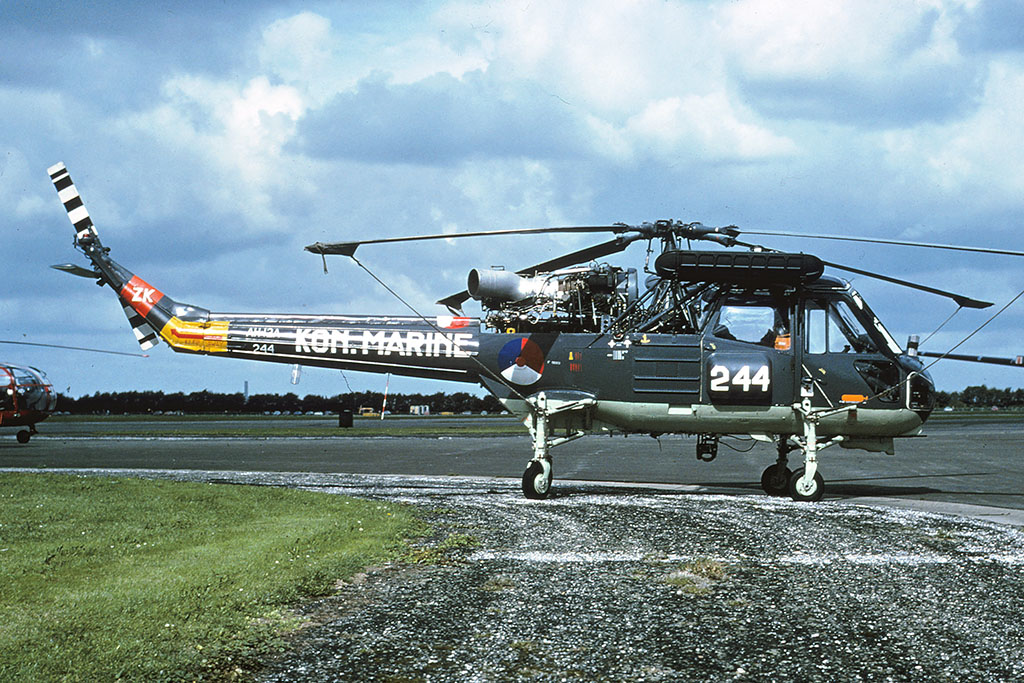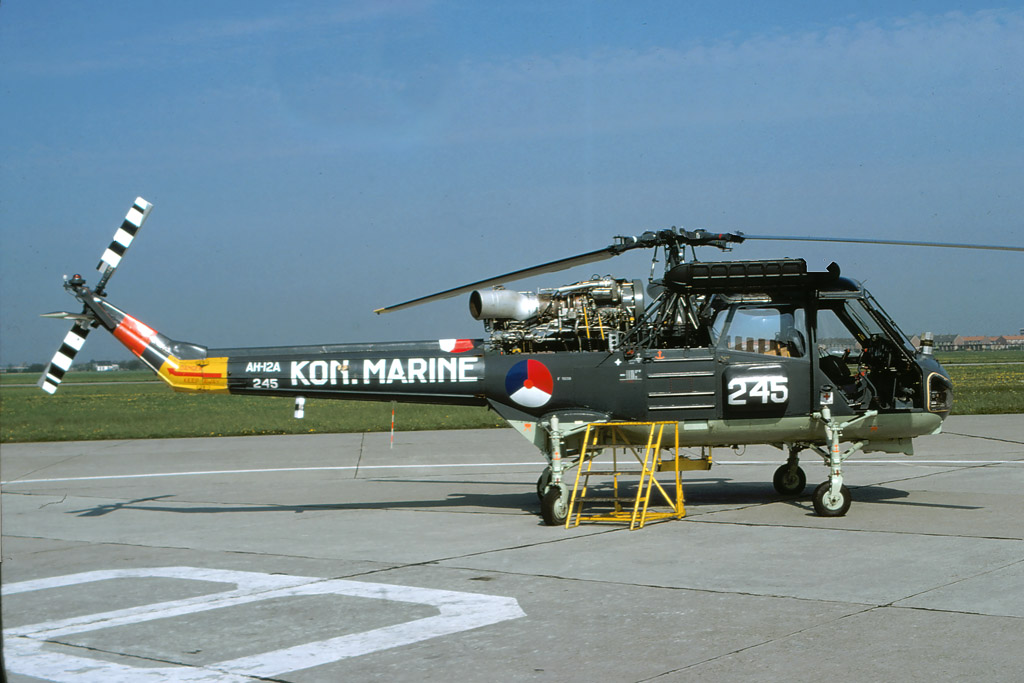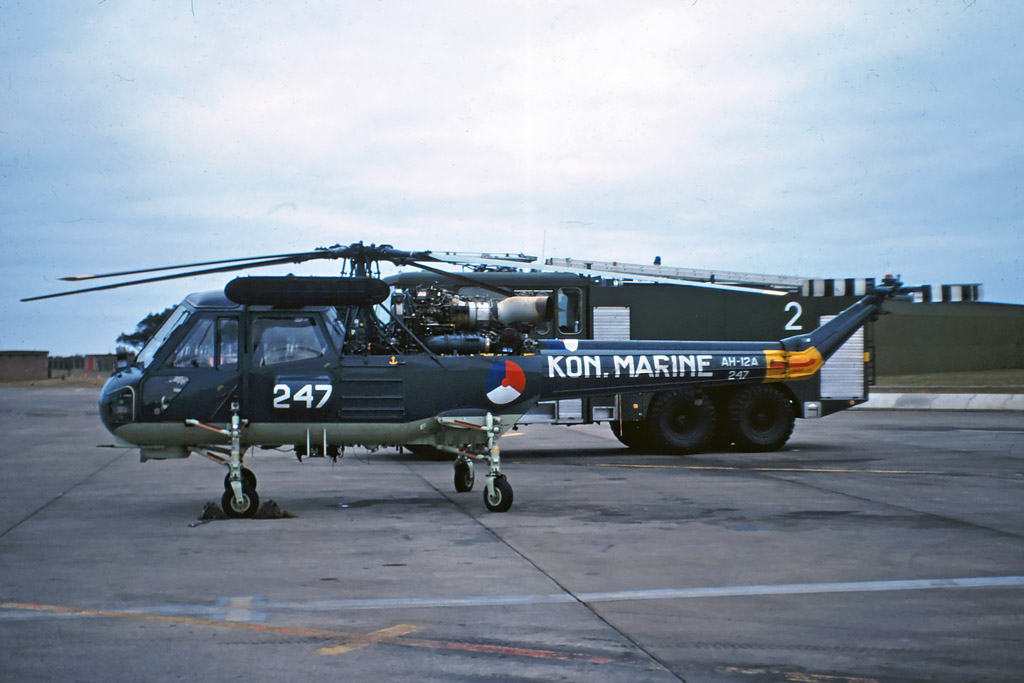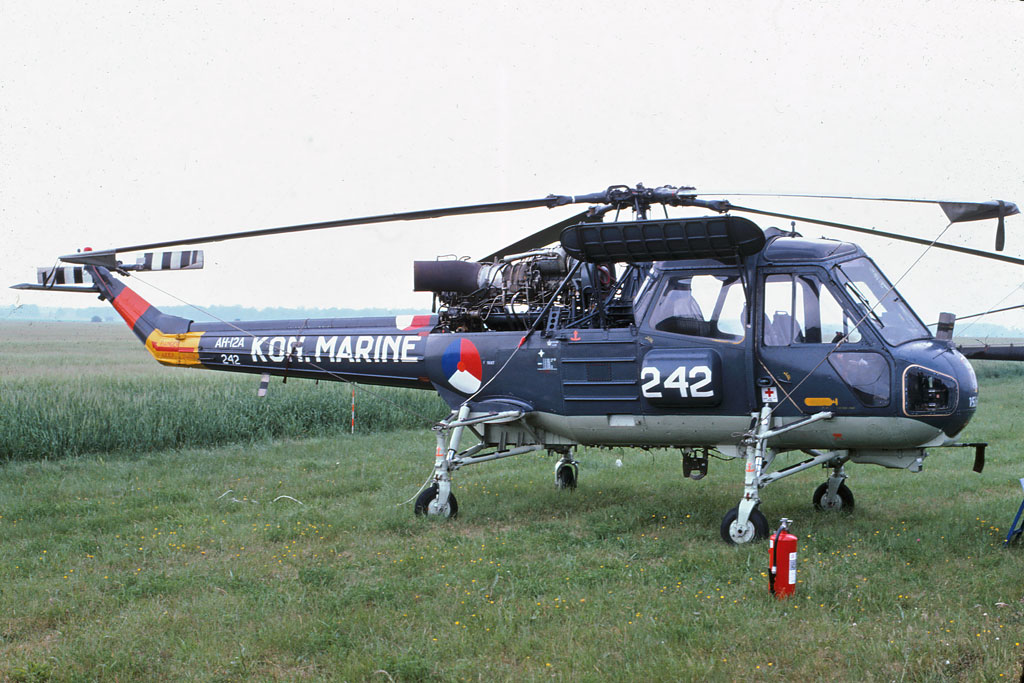| Service history
of the Westland Wasp AH-12A with the MLD
The increasing
development of the submarine after WWII resulted in a weapon with
increased range and speed. Countering this threat led to the
development of early detection systems and the development of a
standoff weapons system able to countermand this treat. That weapons
system was the Westland Wasp, a small first-generation, gas-turbine
powered, shipboard anti-submarine helicopter.
Based on the earlier piston-engine Saunders-Roe Skeeter the Westland
Wasp fulfilled the requirement of the Royal Navy for a manned torpedo
carrying helicopter whose sole purposes was to destroy submarines.
Equipped with no Sonar of its own and small enough to land on the deck
of a frigate and carrying a useful load of two homing torpedoes the
Westland Wasp was the perfect stand-off weapon.
|
Helicopter Force
|
 |
 |
Delivery to the Royal
Netherlands Navy (MLD)
A requirement for a
anti-submarine helicopter developed in the Dutch navy after a fire
aboard the aircraft carrier Karel Doorman in 1968. After the fire it
was decided that the cost of the repair where to high as her withdrawal
was planed for the early 1970s. This was to coincide with the arrival
of long range maritime patrol aircraft that were to take over the ASW
role of the Karel Doorman. After this a order was placed for twelve
Westland Wasp AH-12A helicopter to be operated from six Van Speijk
class frigates in the anti submarine wore fare role.
The first twelve Westland Wasp AH-12A , a complete squadron, where
delivered between November 1966 and June 1967. One attrition
replacement Westland Wasp was ordered en delivered in 1974.

| |
 |
 |
|
Operational history
The Royal Netherlands Navy received twelve Westland Wasp helicopters
between November 1966 and June 1967, operated from Van Speijk class
frigates as AH-12A's and flown in the ASW role.
The introduction started in the spring off 1966 as a group off pilots
and engineers left fore the Westland factory in Yeovil for a
introduction in the Westland Wasp. After this introduction course the
first three Westland Wasp were deployed to Culdrose NAS. With the
additional training completed
860 Squadron started operations from de Kooy NAS
During the operational liver of the Westland Wasp the shore base was at
de Kooy NAS. It was the parent unit for deployments to the Van Speijk
Class Frigates. During the latter half of 1974, there were a number of
ships flight assignments to RNAS Portland.
The Westland Wasp was primarily flown in the ASW role, it also operated
in the SAR and transport role. The last of the Dutch Westland Wasps
were eventually withdrawn from service in 1981 when they were replaced
by the Westland Lynx.
|